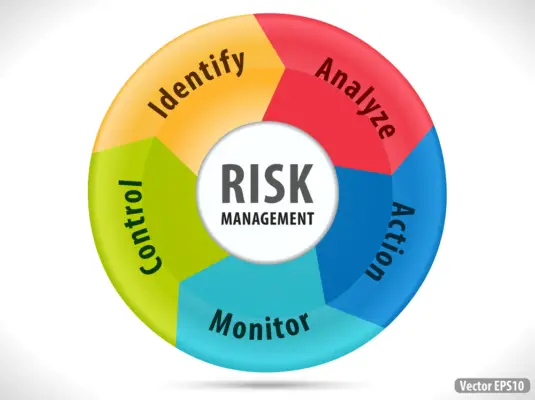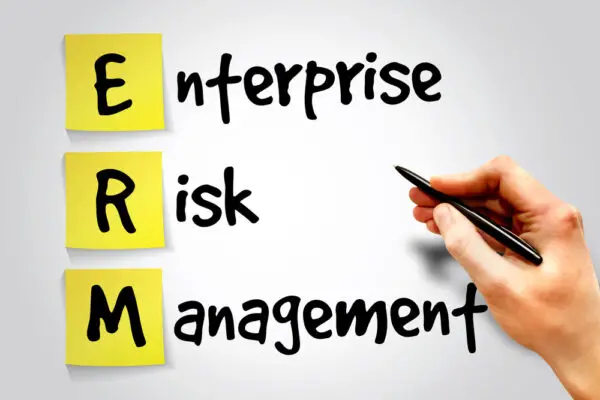The Risk Control Self-Assessment (RCSA) process is an essential tool for businesses to identify and manage emerging risks and opportunities.
To leverage these benefits, businesses should align their RCSA with their business strategy, enable an integrated approach, quantify risk in monetary terms, and increase frontline engagement (source: MetricStream).
Additionally, robust stakeholder engagement in the RCSA process and clear ownership for risks, controls, and resulting findings are essential to unlocking value from the process (source: Promontory Financial Group).
It is a proactive approach to risk management that helps organizations align their risk appetite and strategy with their operational objectives.
It provides several benefits for managing operational risk, including identifying gaps in control processes, improving the effectiveness of controls, and enhancing the overall control environment.
The RCSA process is a continuous cycle of planning, executing, and reporting that helps organizations avoid emerging risks.
It involves identifying risks, assessing their potential impact, and evaluating the effectiveness of existing controls. The process helps organizations establish a risk management framework that aligns with their business objectives and provides a foundation for effective risk management.
By leveraging the RCSA process, organizations can gain a better understanding of their risk profile and identify areas where they need to focus their risk management efforts.

The process helps organizations prioritize risk management activities and allocate resources more effectively. With a well-executed RCSA process, organizations can improve their risk management capabilities, enhance their control environment, and achieve their strategic objectives more confidently.
Understanding the RCSA Process
Risk and Control Self-Assessment (RCSA) is a process organizations use to identify, evaluate, and manage risks and controls.
The objective of the RCSA process is to identify key business risks and their related controls, evaluate those against the desired risk levels and risk appetite, and determine if any improvements are necessary.
During the RCSA process, organizations conduct a self-assessment of their controls to manage or mitigate risks and evaluate the efficacy of those controls.
The process involves identifying and assessing the likelihood and impact of risks, documenting controls, testing the controls, and assessing the results.
The process is an essential component of an effective risk management program. It provides organizations with a structured approach to identify and evaluate risks and controls, which helps them to make informed decisions about risk mitigation and compliance.
The RCSA process helps organizations to identify and evaluate risks associated with their operations, products, services, and systems.
It enables them to anticipate potential risks and proactively mitigate them. By identifying and assessing risks, organizations can prioritize their resources and focus on the most significant risks that could impact their business.
The RCSA process also helps organizations to comply with regulatory requirements and standards. It enables them to demonstrate that they have effective controls to manage risks and comply with regulatory requirements.
Conducting a self-assessment, organizations can identify gaps in their controls and take corrective actions to address them.
The process is a critical component of an effective risk management program. It enables organizations to identify, evaluate, and manage risks and controls, comply with regulatory requirements, and make informed decisions about risk mitigation.
By conducting a self-assessment, organizations can improve their risk management capabilities and enhance their overall performance.
Operational Risk Management and RCSA
Operational risk management is an essential aspect of any business. It involves identifying, assessing, and managing risks that may arise from the processes, systems, and people within an organization.
To achieve effective operational risk management, businesses need to have the right tools and processes in place. One such process is the Risk and Control Self-Assessment (RCSA).
RCSA is a risk assessment tool that helps businesses identify and assess risks within their operations. It involves a self-assessment of the controls that a firm uses to manage or mitigate risks and the efficacy of the controls.
The process attempts to identify and assess organizational concerns, both current and emerging and determine the likelihood of their occurrence.
The process is a critical component of operational risk management, allowing businesses to identify potential risks and take appropriate measures to manage them.
It helps businesses to understand the risks associated with their products and services and the impact they may have on their business units. The process also helps businesses to identify areas where technology may be used to mitigate risks.
RCSA is an effective tool for businesses looking to improve their operational risk management capabilities. It provides a structured approach to risk assessment that allows businesses to identify and assess risks, determine the likelihood of their occurrence, and take appropriate measures to manage them.
Efficiency and Effectiveness of RCSA
The Risk Control Self-Assessment (RCSA) process has become a popular mechanism for organizations to identify, assess, and manage their risks. It is an effective and efficient tool for organizations to evaluate the effectiveness of their risk management framework.
One of the key benefits of RCSA is that it provides insight into the organization’s risk profile. By identifying and assessing risks, organizations can gain knowledge of their risk landscape, which can help them make better-informed decisions.
This insight can also help organizations prioritize their resources to focus on the most significant risks.
RCSA is an efficient process that can save resources by reducing the need for external audits and regulatory inspections. By identifying and mitigating risks internally, organizations can avoid fines and other penalties associated with non-compliance.
The effectiveness depends on the quality of the process and the resources allocated to it. A well-designed RCSA process can provide valuable insights into an organization’s risk landscape, while a poorly designed process can lead to inaccurate risk assessments and ineffective risk management.
RCSA is an efficient and effective tool for organizations to identify, assess, and manage risks. Providing insight and knowledge into an organization’s risk profile can help organizations make better-informed decisions and prioritize their resources to focus on the most significant risks.
RCSA in Business Continuity and Risk Mitigation
The Risk and Control Self-Assessment (RCSA) process is an effective tool for businesses to identify, evaluate, and mitigate risks that may impact their operations.
By conducting an RCSA, businesses can proactively identify potential risks and develop an action plan to mitigate them. This process can be particularly useful for businesses that operate in high-risk industries, such as financial institutions.
Enterprise Risk Management (ERM) is a critical component of the RCSA process. ERM helps businesses to identify and assess risks across their organization and align them with their risk appetite and business objectives.

By doing so, businesses can prioritize risks and develop an action plan to mitigate them. This approach enables businesses to take a holistic view of their risks and develop a comprehensive risk management strategy.
Business continuity is another area where the process can be beneficial. By identifying potential risks and developing an action plan to mitigate them, businesses can ensure they are prepared for any disruptions to their operations.
This can help businesses to minimize the impact of any potential disruptions and maintain business continuity.
Financial institutions, in particular, can benefit from the RCSA process. The financial industry is highly regulated and faces numerous risks, including credit risk, market risk, and operational risk.
Conducting an RCSA, financial institutions can identify and assess these risks and develop an action plan to mitigate them. This can help financial institutions to comply with regulatory requirements and maintain the trust of their customers.
Value is another key area where the RCSA process can be beneficial. By identifying potential risks and developing an action plan to mitigate them, businesses can protect their assets and maintain their value. This can help businesses to maintain their competitive advantage and ensure their long-term success.
The RCSA process is an effective tool for businesses to identify, evaluate, and mitigate risks that may impact their operations.
Conducting an RCSA, businesses can develop an action plan to mitigate potential risks and ensure business continuity. The RCSA process is particularly useful for businesses that operate in high-risk industries, such as financial institutions.
Through prioritizing risks and developing a comprehensive risk management strategy, businesses can protect their assets and maintain their competitive advantage.

Chris Ekai is a Risk Management expert with over 10 years of experience in the field. He has a Master’s(MSc) degree in Risk Management from University of Portsmouth and is a CPA and Finance professional. He currently works as a Content Manager at Risk Publishing, writing about Enterprise Risk Management, Business Continuity Management and Project Management.

